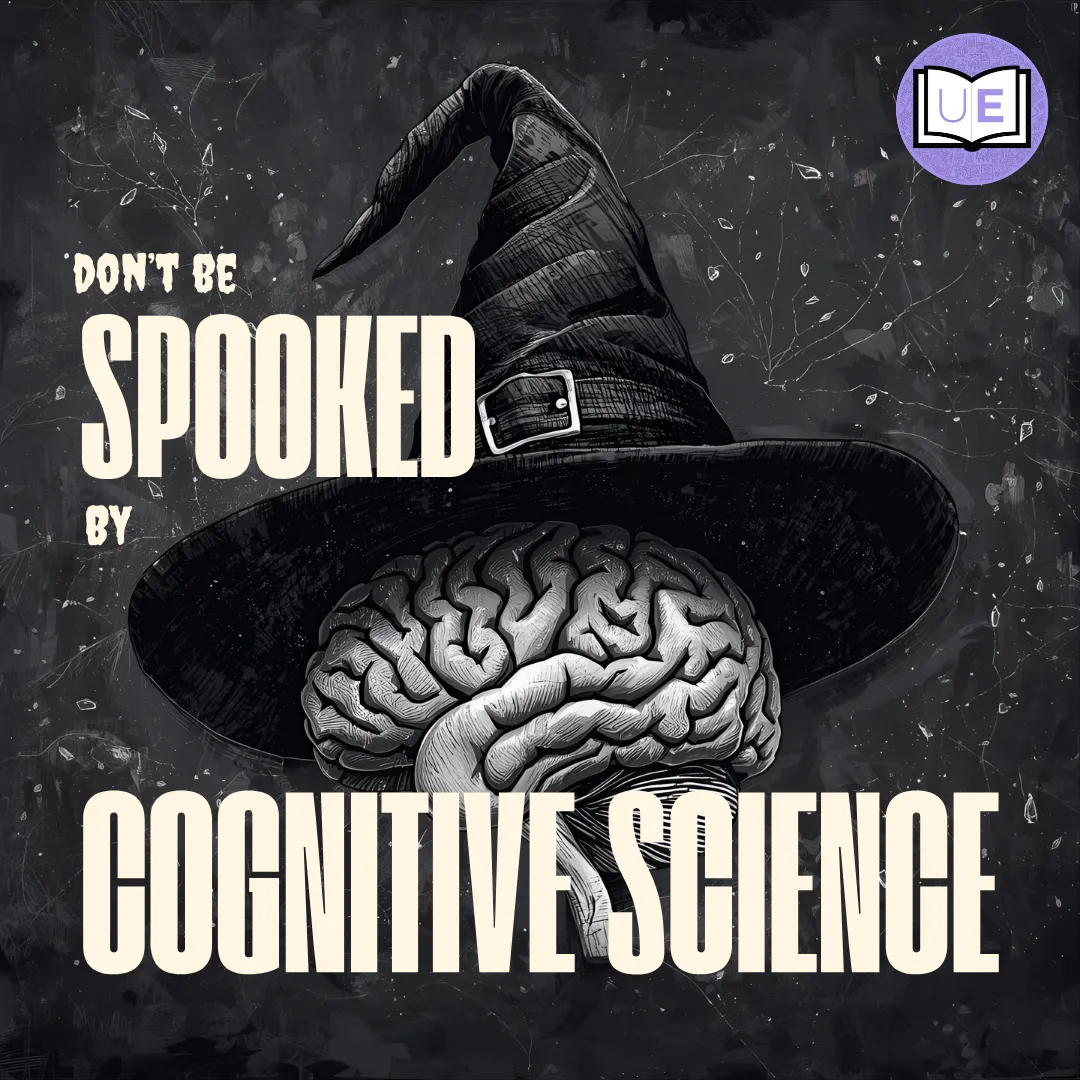
Don’t Be Spooked by Cognitive Science | Uncomplicate Ed
5 Cognitive Science Moves to Try Before Halloween
Here's the Gist:
Cognitive science can feel intimidating, but it doesn't have to be.
These 5 strategies are research-backed and classroom-ready.
They apply across subjects and grade levels because learning is learning.
No full lesson redesign required, just intentional shifts.
Each one connects directly to how students' brains actually learn.
Scroll to the TL;DR at the bottom if your planning period is already haunted.
Keep reading...
October is full of monsters, masks, and mayhem. But nothing sends a bigger chill down a teacher’s spine than the phrase “cognitive science” followed by a 94-slide theory deck.
Let’s clear the cobwebs.
Cognitive science is just the study of how learning really happens. You don’t need a new curriculum or an extra planning block to use it. Just a few smart, research-informed moves you can try this week. Some of them, you might already be doing.
Here are five of our favorite strategies with a Halloween twist.

1. Retrieval Isn’t Just Review. It’s Resurrection.
Instead of having students re-read or re-watch for review, get them to pull information out of their brains. Retrieval builds memory more effectively than passive study.
Try this:
End your lesson with two or three recall questions from earlier in the unit.
Ask students to close their notebooks and list everything they remember
Have them sketch a process, timeline, or set of vocabulary terms from memory.
It’s like raising the learning from the dead, but in a good way.

2. Drawings Aren’t Decorations. They’re Memory Anchors.
The brain learns best when words are paired with visuals. That’s called dual coding. When students can visualize abstract ideas, they remember them more deeply.
Try this:
Ask students to illustrate key ideas or processes.
Sketch as you teach, even if it’s just quick stick figures.
Use icons or doodles on anchor charts to link ideas to meaning.
You don’t need to be an artist. Just show the thinking in pictures.

3. Worked Examples Are Not Cheating. They’re Magic.
Worked examples—where you model exactly how to think through a task—are one of the most effective ways to help students build mental models.
Try this:
Talk through your thinking aloud while solving or analyzing.
Write and speak your steps clearly and deliberately.
Compare two different strategies and explain which one works better and why.
When you model the mental moves, you make invisible thinking visible.

4. Chunk or Be Cursed by Overload
Students aren’t lazy. Their brains are overloaded. Chunking helps break content into smaller parts and allows for meaningful processing.
Try this:
Teach for a few minutes, then pause to reflect, sketch, or summarize.
Use “turn and teach” so students explain the chunk to a partner.
Stop every few paragraphs during reading to ask, “What just happened?”
Brains are powerful, but they need breaks to process.

5. Spaced Practice Keeps Learning from Ghosting
If you teach something once and never revisit it, students will forget. Spaced practice brings content back over time to help it stick.
Try this:
Begin new lessons with a quick question from a past topic.
Do a "Flashback Friday" to revisit prior benchmarks or skills.
Spiral in vocabulary, anchor charts, or key concepts in warm-ups.
Spacing out practice helps knowledge linger long past October.
TL;DR: Learning Shouldn’t Be Scary
Here’s a quick summary of each move:
Retrieval: Bring learning back from the dead.
Dual Coding: Pair visuals with words to make learning stick.
Worked Examples: Model the thinking so students can follow.
Chunking: Break content into manageable parts.
Spaced Review: Bring it back later so they don’t forget it.
These are not tricks or shortcuts. They are real strategies that align with how brains learn. You can try any of them this week without turning your whole lesson into a haunted house.
At Uncomplicate Ed, this is our jam. We take research that often feels overwhelming and turn it into clear, practical moves educators can actually use. Our tools are built to make the science of learning feel doable, relevant, and totally teacher friendly.
Because brains may be complicated but teaching them doesn’t have to be.
Explore more at www.UncomplicateEd.com or join the conversation in our Facebook group Uncomplicating Education Across the Nation.

